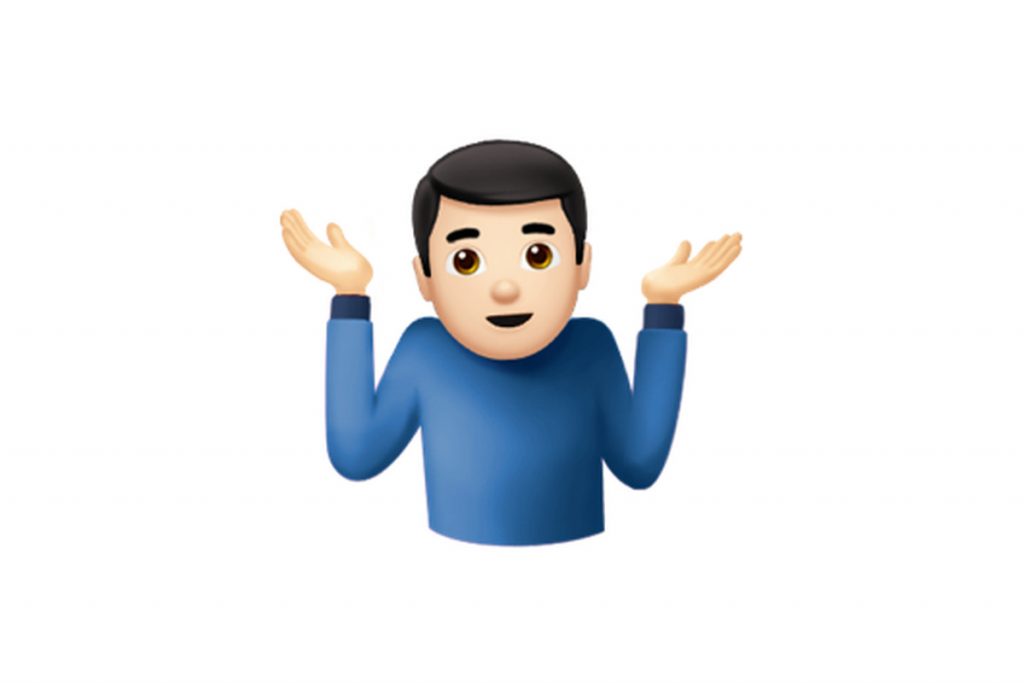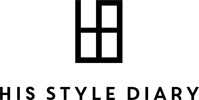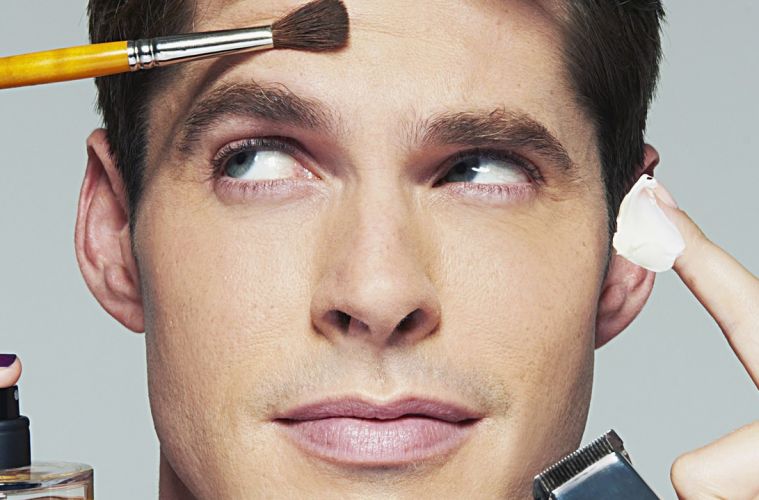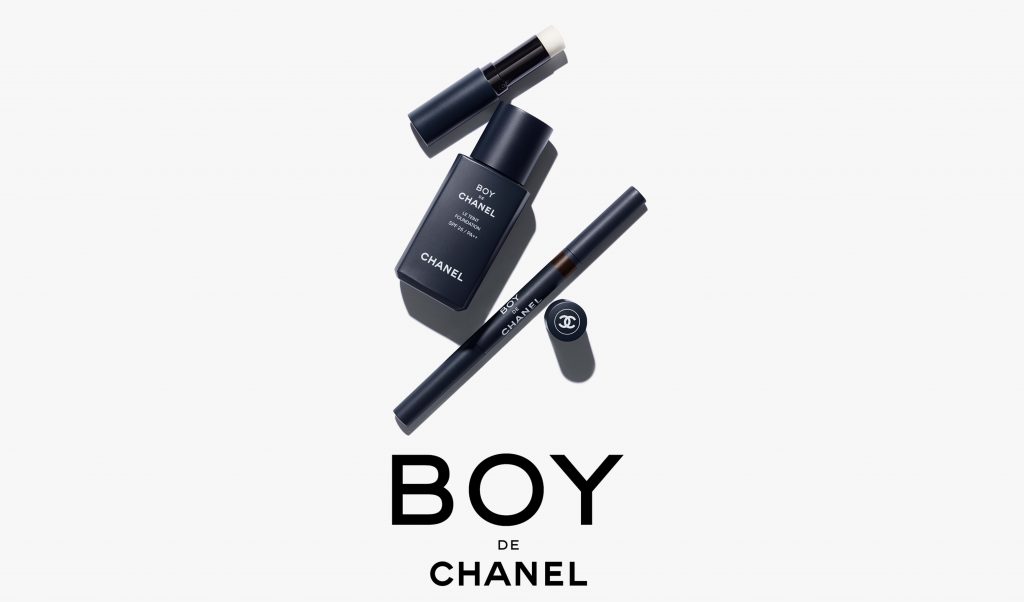Men’s makeup may sound like a recent phenomenon but that just simply isn’t true. Merriam Webster defines “makeup” as cosmetics (such as lipstick, mascara, and eye shadow) used to colour and beautify the face. This is obviously a narrow definition as makeup extends beyond the three examples given. That said, by that definition, men have been using makeup as early as 4000 BCE in Egypt. While they do execute a mean cat-eye look that would make even Cleopatra jealous, they didn’t do it primarily to beautify the face. It was to seek protection from the gods. Flash forward several millennia and famous names such as Boy George, Pete Burns (Dead or Alive), David Bowie and Johnny Depp (hello guyliner) come to mind when we think about men and makeup.
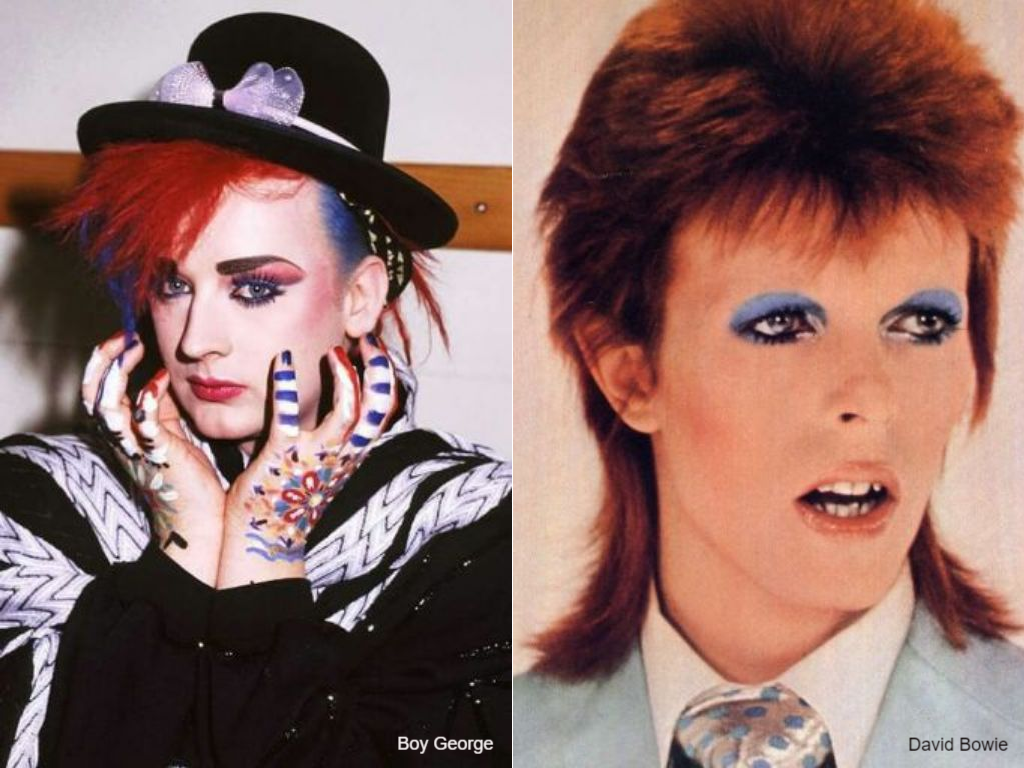 L to R: Boy George and David Bowie
L to R: Boy George and David Bowie
Photo credits: Pinterest (Boy George) and ladygarfunkel.tumblr.com (David Bowie)
While earlier celebrities such as Boy George and David Bowie caused equal amounts of awe and “tsks” with their use of makeup that blur and bend gender lines, more recent examples of famous men using makeup fall into the category of enhancing one’s features, such as creating a fuller-looking brow, concealing dark undereye circles or simply creating a no-makeup makeup look (yes, men did that way before it was a thing). Cue Xiao Kai, Taiwanese makeup maestro, Ivan Lam, one of the earliest men’s makeup vloggers on YouTube and Sal aka The Eyebrow King, another popular vlogger on YouTube amongst many others. With a combined total of over 500,000 subscribers to their YouTube channels, it’s fair to say they’ve certainly commanded a certain level of interest in men’s makeup/grooming.
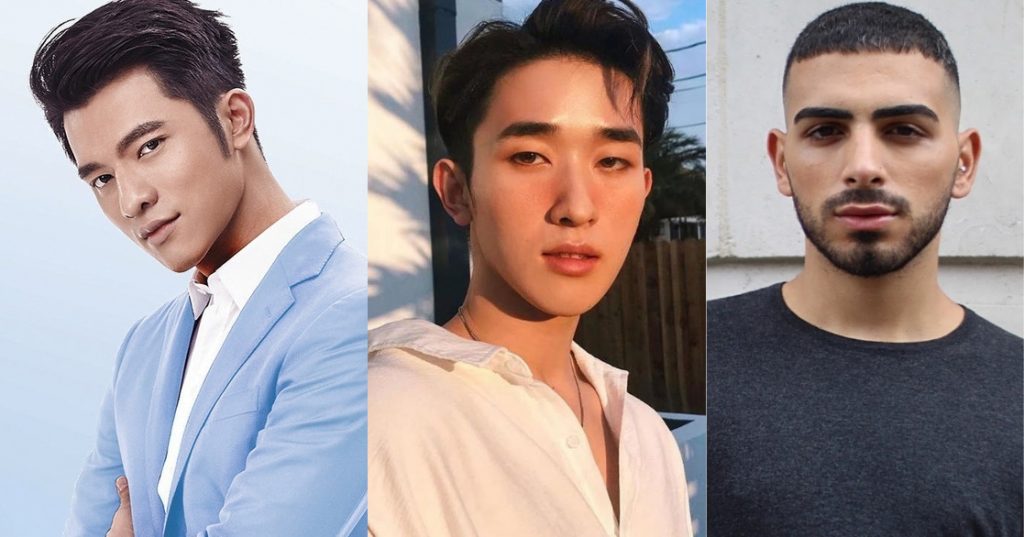 L to R: Xiao Kai, Ivan Lam and Sal
L to R: Xiao Kai, Ivan Lam and Sal
Photo credits: Hada Labo, facebook.com/IvanLAMLJ and youtube.com/user/SalihsWorld
There’re certainly also other very famous beauty vloggers who use makeup in a way that’s more traditionally associated with women’s makeup looks such as Jeffree Star, Manny MUA and James Charles (who was also notably the first man used as a spokesperson for CoverGirl cosmetics). Together, they share 23 million subscribers on YouTube who tune in regularly to their makeup related videos. Of the three, Jeffree Star has also gone on to create his own makeup line, Jeffree Star Cosmetics , in 2014 to much commercial success with his products typically selling-out within minutes of their online launch.
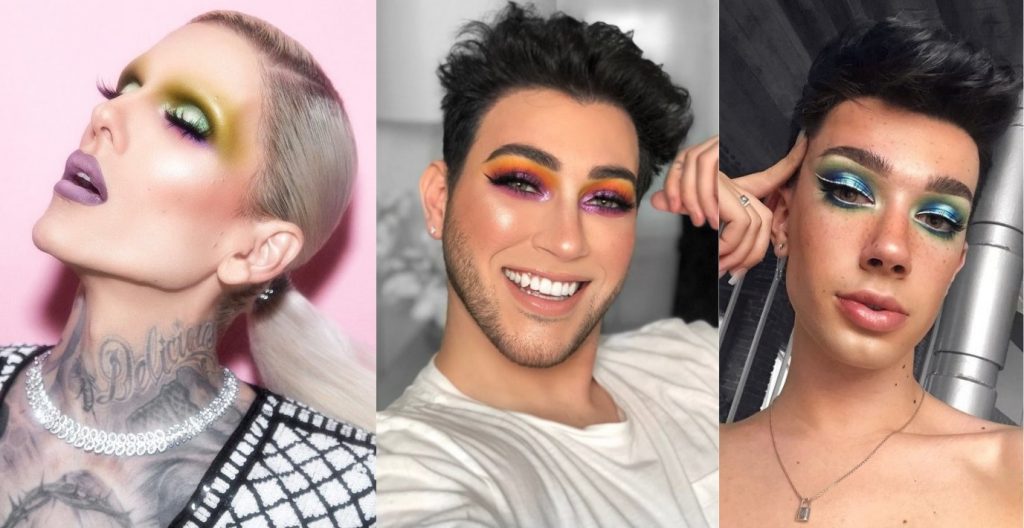 L to R: Jeffree Star, Manny MUA and James Charles
L to R: Jeffree Star, Manny MUA and James Charles
Photo credits: Twitter @JeffreeStar @MannyMua733 @jamescharles
So, what’s the big deal about men wearing makeup then? Let’s get straight to the elephant in the room and that is, many hold the opinion that makeup is strictly women’s territory and men who choose to “go there” are considered less of a man or veering away from the deeply entrenched social definition of traditional masculinity. By choosing to use makeup, men are thus considered to have chosen to relinquish their masculinity or gender identity. Inherent in this argument is of course the hugely misogynistic premise that one gender is better or more preferred than the other. As with other actions that challenge or blur the social construct of “rules’ governing one’s conduct according to their assigned gender, this topic remains hotly debated.
That said, the sales of men’s grooming products indicate that men are increasingly being more open to the idea of taking care of their skin and using products to improve the way they present themselves. According to statista.com , the estimated size of the global male grooming market would reach 29.14 billion U.S. dollars by 2024. This would mean that the market would have grown 67% as compared to the base point in 2012 at 17.39 billion U.S. dollars. We may argue that skin care and makeup belong to two different categories, however, the article suggested that this includes what would typically be considered makeup products, such as bronzers and concealers.
In the last decade, many well-established skincare and makeup brands that typically market to women had also branched out to create a separate men’s line, such as the L’Oréal Paris Men’s Expert, Garnier Men and SKII Men. While some of the early movers that established men’s makeup products belong to Korean brands, even a mainstream luxury makeup brand like Chanel has gotten into the game. They’ve just launched Boy de Chanel, their first men’s makeup line. Given that the K-Pop wave has greatly advanced the visibility (and some might argue acceptance) of men wearing makeup, it’s no wonder that Chanel chose to debut this range in South Korea in September. Boy de Chanel will be available online at their e-commerce platform in November and worldwide in their boutiques from January 2019.
Photo credit: Chanel
So, what should we be making of all this information and trends? Nothing, really, in my opinion. While these shifting trends are positive to behold especially in removing rather meaningless archaic hang-ups, I argue that even in lieu of them, individual liberty in the area of how one chooses to look should be embraced and practised without any fear of criticism from others.
Therefore, go on and fill in your brows, if you want to. Dab on some concealer to hide your undereye circles and blemishes if that makes you feel more confident. Put on some bronzer or even cheek tint to warm up the look of your face. Or, go beyond and line your eyes or even apply some colour products if you want to or if it makes you happy. Choosing to do any of the above remains one’s individual prerogative and right, and as long as it doesn’t hurt anyone, I say to my fellow men skincare and makeup enthusiasts, go on and keep doing what you like and want to do.
At the end of the day… your face, your rules.
